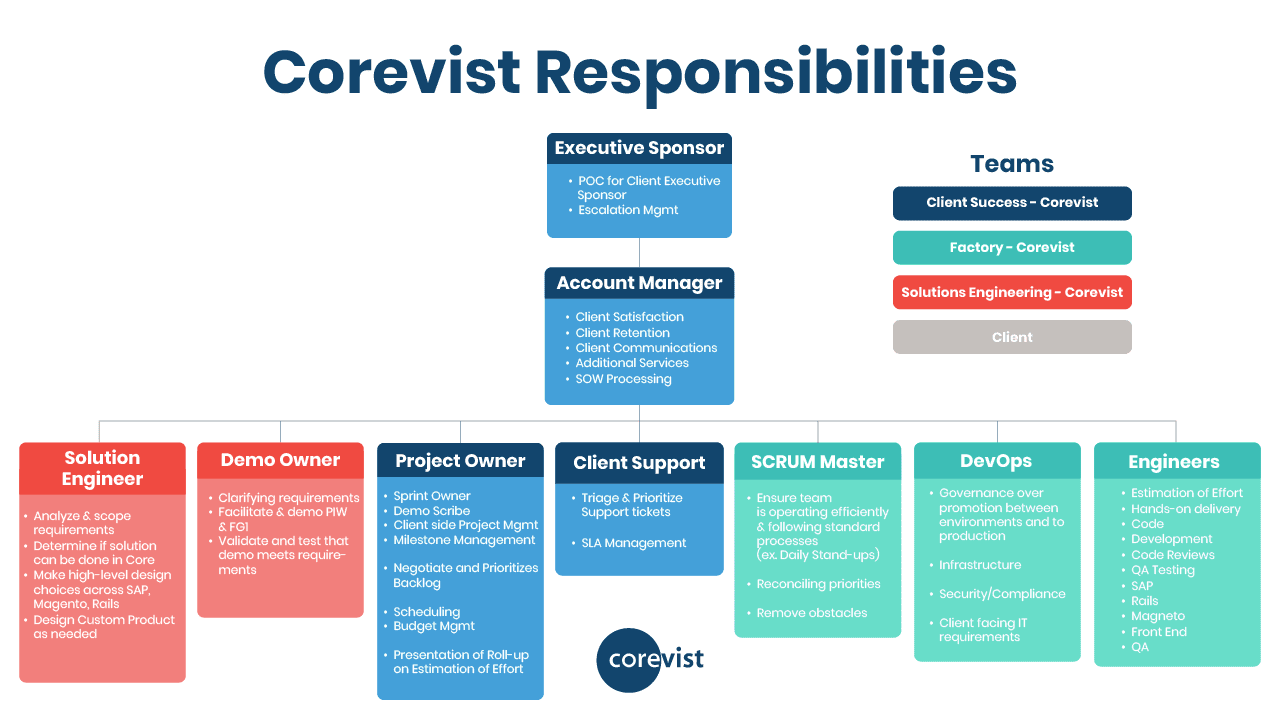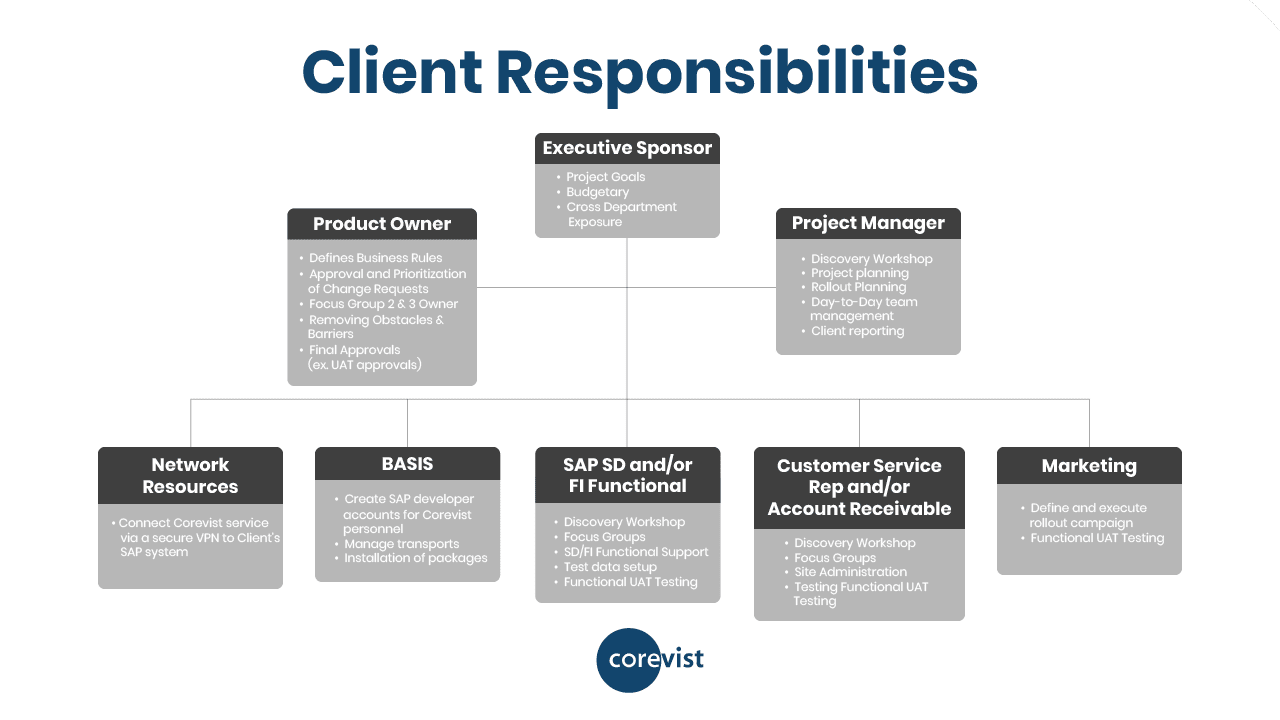Share
Author
Carolyn Sparano
Share
eCommerce is a complex proposition when it’s integrated with SAP. Even though Corevist products include prebuilt, configurable SAP integration, these projects require cross-functional collaboration on both the client’s team and ours to ensure long-term success.
If we don’t define these roles, or if people don’t agree on them, everyone involved will encounter unnecessary confusion and stress. This leads to wasted resources, and it delays our ability to deliver value (which is our #1 priority).
Clearly defined accountability charts are the key. Here’s how our charts look at Corevist—and what they mean for our implementations.
The problem: How do you reduce the stress and drama of complex implementations?
We’ve always had internal accountability charts at Corevist, and we measure ourselves quarterly to ensure everyone understands the expectations we place on them and what they can expect from others. These accountability charts explain who does what at Corevist—both during the project phase, and for the ongoing life of the web channel after GoLive, when we act as our client’s trusted advisor.
But it takes two to tango. Everyone involved in the project needs to understand what’s expected of them (and when) to reduce stress and drama. In some cases, the client may not realize what additional resources are required from their side. Our position in the market is unique (full-stack provider of managed, SAP-integrated solutions), so it’s on us to communicate how much of the burden we take off our clients’ shoulders—and what specific burdens we still ask them to carry.
We’ve had instances where clients didn’t understand what was expected of them. This created unnecessary stress, and it’s why we recently began sharing our accountability charts with our clients—defining both our roles, and theirs.
Our solution: 100% transparency in accountability, no surprises added
Here’s how we define project roles, both at Corevist, and on our clients’ teams:
How Corevist teams collaborate on an implementation
Corevist Client Success:
Owns the success of our client’s digital business. Understands the primary business drivers for the project and works with Solutions Engineering to ensure that technological solutions support those goals.
Corevist Solutions Engineering:
Defines the technical requirements for the implementation. Determines if the product already supports requirements, or if customization is needed. If so, Solutions Engineering designs those customizations.
Corevist Factory:
Owns infrastructure, security, compliance, and environment management. Configures, tests, refines, and ultimately launches the client-specific solution. Manages operations across the implementation.
How the client collaborates with us on an implementation
Corevist projects thrive on collaboration. We lead the implementation at the outset, gradually training our client on our methodology. By the end, the client is leading the implementation, following our methodology.
Here’s how that collaboration looks in detail.
The client’s role in Corevist’s implementation methodology
We use a Project Initiative Workshop, then a series of 3 focus groups, to refine the solution for the client’s unique needs. We run the Project Initiation Workshop and the first focus group. We continually ask the question, “Why can’t we put this software into production today?” This question keeps everything tied to value—and it helps us prioritize the most important value to deliver at GoLive.
After the first focus group, we turn over responsibility for subsequent focus groups to the Product Owner at our client. The Product Owner is responsible for achieving the business objectives which the Executive Sponsor has defined for the project. The Product Owner also serves as the “referee,” deciding between competing requests which other client stakeholders may bring up during the implementation.
The Project Manager handles the day-to-day assignment of work on the client side, bringing in specialized resources (Network, BASIS, SD/FI, Customer Service/AR, and Marketing) at the appropriate point in the project.
The Takeaway
Implementing SAP-integrated eCommerce requires transparency. With roles clearly defined and all stakeholders committed to doing their part, a complex implementation runs like a well-oiled machine–with no drama and no stress. Once you’ve eliminated this confusion, you’ll see value faster—which is our #1 goal in launching every Corevist solution.
Want to become Easier To Do Business With?
Check out the Corevist Platform.
Managed B2B portals and eCommerce with prebuilt integration for ECC and S/4HANA.












